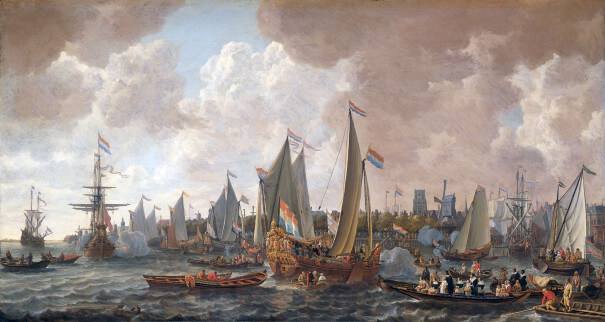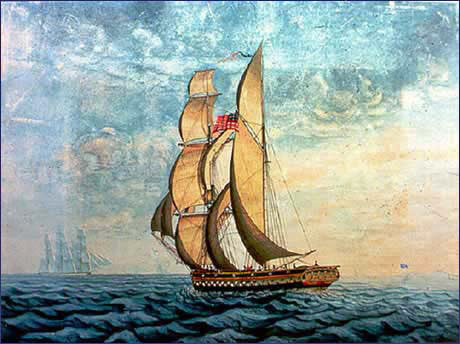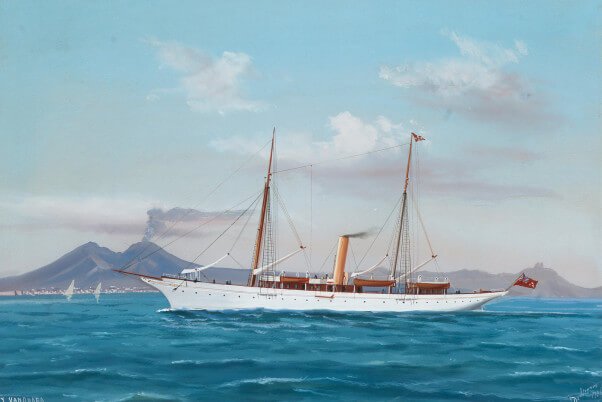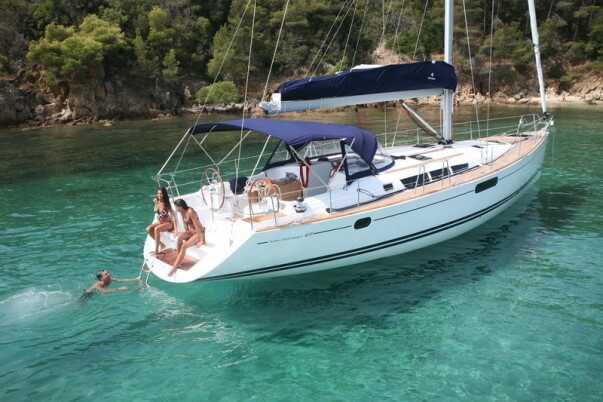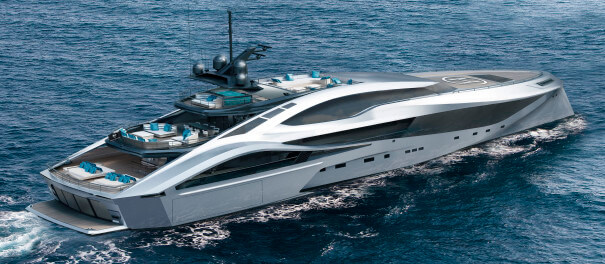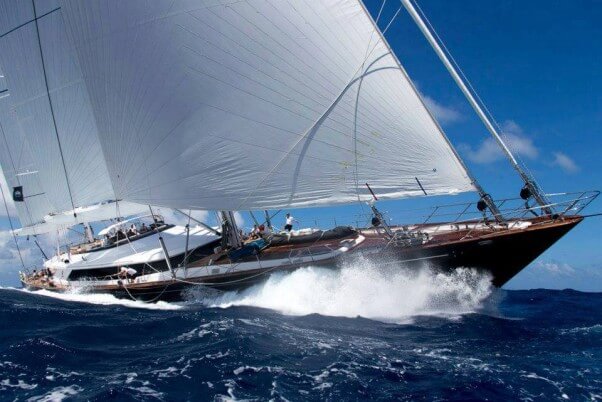For yacht definition there have been expressed different views. Many continue to disagree and argue their own position on what is a yacht. Nevertheless everyone will certainly agree on one thing. In any case it concerns a “pleasure craft” or else yacht is a “recreational vessel”.
The yacht definition in a phrase is: “any watercraft which features accommodation and used solely for pleasure, be it leisure or races or even a getaway”.
Formerly the yacht definition had narrower content. Nowadays, yacht is any vessel intended for pleasure which can accommodate people. And yet the origin of the word had to do with harsh necessity rather than pleasure. But how was this change? Let’s navigate a while into history!
The term YACHT is originated from the obsolete Dutch word “jaght”, which comes from the Middle Saxon “jacht” meaning hunt or to pursue, which is also the short for jachtschip which means hunting ship / ship for chasing. “Jacht” has Proto-Germanic root just like German “Jäger” which means hunter.
She was a swift lightweight chasing vessel which was used by authorities in the coastal parts of the Low Countries by the Sea to pursue outlaws(1). During the 17th century has been used by the Dutch as a recreational vessel(2) as well as in informal improvised races both in the Netherlands and in their establishment in North America, which later renamed New York. Such a vessel was used in 1660 for the transfer of the Merry Monarch (Charles II) from Scheveningen of The Hague, United Netherlands in Dover, England following the resolution of the English Parliament to proclaim him king and invite him to return.
Until fairly recently yachts were considered as large and luxurious vessels for the personal use and entertainment of important and wealthy persons.
The starting point of this perception is claimed to be that by selecting an important person as Charles II the particular vessel for the carriage of, in connection with such an important purpose as the resumption of his crown, remained in the English perception of that era and therefore into the language, that this foreign watercraft is a vessel for important people. In a public speech, Charles praised the “jaght” which was given to him as a gift at Breda during his exile(3). Charles and his brother the Duke of York James II, built similar vessels. Particularly two of them competed for prize at the Thames. In deed it was from this royal family that sailing for pleasure was spread between the nobility and the wealthy in England.
Dutch and English carried on this luxurious pleasure to America. There in Massachusetts, later on in 1816 the recreational vessel Cleopatra’s Barge was built.
With this yacht the matter of opulence and luxury ascended to another level. Out of this level the standards for construction of yachts in the coming years were set.
As regards to the shipbuilding type, pleasure vessels did not remain on the lines of the Dutch craft. As early as the starting point of the new lifestyle they followed other known lines of the era as well such as schooners, brigantines and cutters.
From the mid-19th century onwards, transition happens from sail-powered to steam-powered vessels and from the use of wood to the use metal in the construction. Steam engines emerge and afterwards internal combustion engines. The machines start to be used also in the yachts as were in the naval and the merchant ships. At the beginning machines are installed along with sails that remain for a few years as a backup means of propulsion. The new means of propulsion require storage for fuel and reinforced structure. Consequently pleasure vessels are built large to very large and very luxurious also. Therefore these yachts belonged to the private property of very rich people.
In the same period, i.e. from mid-19th century and then, begin to appear in publicity feats with particularly small watercrafts. Their skipper alone and unaided (single handed) sails long distances at the high seas, like the Channel crossing, the Atlantic crossing or even circumnavigating the world. Alongside, books are issued with regards to this kind of adventures at sea. This way it is propagated that small vessels are seaworthy. Small yachts win popularity while many are getting inspired to try yachting.
From the time of the Great Depression and after, there has been a reduction in the construction of large and expensive yachts. The trend henceforth is toward the smaller yachts. From there and beyond and in particular from the mid-20th century onwards more and more small size yachts appear. The reason is that as the yacht’s size decreases, the construction cost is reduced at a faster rate than the rate at which the size decreases.
Further to this, from the 80s and after they were developed construction methods under which the cost per unit of production was increasingly reduced. The new construction methods use new materials such as fiberglass, and deploy mass production processes based on standard designs. On the other hand there has been a substantial rise in the standards of living, mainly in Western Europe and North America. As a result, there has been more available income for allocation to more affordable in terms of construction cost yachts, either in the form of acquisition or in the form of rental. In this way we saw the considerable flourishing of a new form of holidays and tourism with chartered yachts.
Consequently yacht definition widened from the narrow confines of the large and luxurious pleasure vessel. Now it includes any vessel meant for pleasure which features accommodation. And this is regardless of the primary means of propulsion that can be the sails or the engine of.
So let’s stake out yacht definition: The word emanated from a relatively small and manoeuvrable type of vessel. That vessel was above all very fast because her purpose was to chase other vessels. In the 17th century she was used in competitions where the objective was the speed and the story was the persecution. This and other types were used by important and wealthy persons for pleasure in general. They were built in larger sizes and with great luxury because cost was not an issue for their owners. The more the luxury and the comfort the yachts had the more they were losing their racing character. From the mid-19th century and then small yachts start to appear. These yachts combine the racing character with the recreation prospect providing at least comfortable accommodation if not luxury. By the second half of the 20th century and after the small vessels offering cruising speed and comfort are greatly increased. Nowadays they predominate numerically over the very large and luxurious ones due to the greater acquisition possibilities of by many more people. Well, all these are yachts!
The prevalent element in yacht definition which differentiates her from other vessels, perhaps the unique one, is the kind of use. That is to say, whether used for personal pleasure, something which includes accommodation and at least basic amenities and thence and beyond merely recreational cruise or race. Flagrant example is that following the termination of second World War many individuals bought small warships and turned them into yachts. Therefore a vessel is defined as yacht not just by the design of, but mainly by the way it is used.
Today you don’t need to have high incomes so to enjoy aboard a yacht. No need to buy because you can rent a yacht for a few days and be entertained in any sea of the planet you want. Yachts built for offshore sailing are safe in all sizes. Moreover they provide a wealth of amenities that previously would have been considered a great luxury.
Let’s contemplate that in 1492 Christopher Columbus arrived in the Americas onto his flagship that was just 58 feet or 17.7 meters. We easily realize that the board size that once served the necessities of trade, war, and expansion of hinterland through discoveries, today is a common size for navigable pleasure. Today, we can easily enjoy sailing holidays and we can live regally in the terms of once upon, even for a few days.
So we managed to fit all pleasure crafts (or almost all) within yacht definition. If someone wants to know more about what exactly is included today in yacht definition should look for the types of sailing yachts of catamaran yachts and of motor yachts.
—————————
Yacht definition notes:
- Under the name “jaght” there were also other types of Dutch crafts. One example is the armed three-masted merchant vessel that was used in the 17th century on routes to and from the East Indies. Another example is the “d’Halve Maen” with which Henry Hudson explored in 1609 for the northwest passage of America.
- Pleasure crafts have existed among all seafarer nations from the depths of history. Yet here we look at the origin of the word yacht and what is included into yacht definition.
- The jaght was commissioned by the Dutch East India Company. Charles II named her “Mary” in the honor of his sister.
Further reading:

